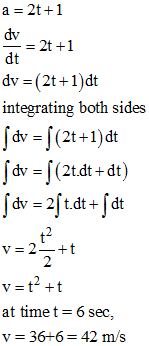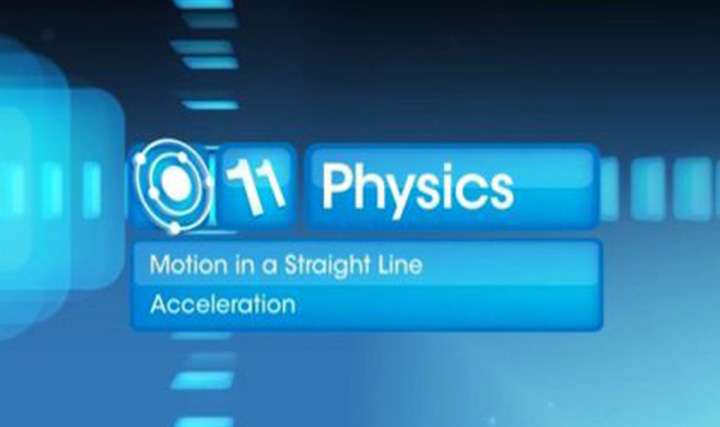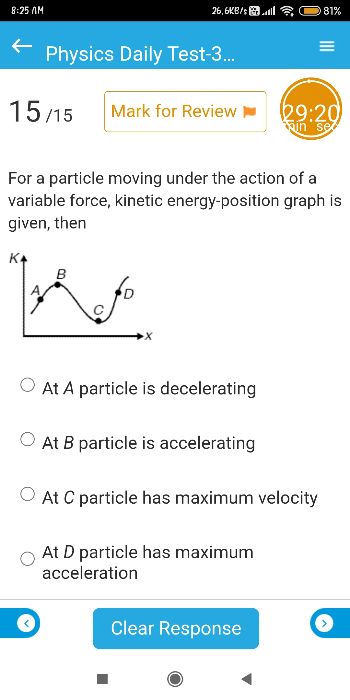CBSE Class 11-science Answered
A particle is seen at x=0 and t=0. The acceleration of the particle depends on time asa=(2m/s3)t+(1m/s2) along x-axis
If the particle is at rest at the origin at the moment t=0, then at t=6 sec, its velocity is
Asked by Anil | 11 Jun, 2017, 07:46: PM
When a particle is seen at x=0 and t=0 and the acceleration of the particle depends on time as
a=(2m/s3)t+(1m/s2) i.e a=2t+1 along x-axis.
Also, if that particle is at rest at the origin at time t=0, then at t=6 sec, its velocity is calculated by using the relation that acceleration is the rate of change of velocity with respect to time i.e 


Therefore, at time t=6 secs, the velocity of the particle is 42 m/s.
Answered by Abhijeet Mishra | 11 Jun, 2017, 10:08: PM
Concept Videos
CBSE 11-science - Physics
Asked by rahmanshah8572 | 29 Dec, 2023, 08:41: PM
CBSE 11-science - Physics
Asked by pothulasubbarayudu | 25 Dec, 2023, 06:58: PM
CBSE 11-science - Physics
Asked by shrianshchandra | 12 Apr, 2023, 03:00: AM
CBSE 11-science - Physics
Asked by varmaakshay2020 | 13 Jun, 2022, 11:43: AM
CBSE 11-science - Physics
Asked by solankihemant2007 | 05 Mar, 2022, 05:19: PM
CBSE 11-science - Physics
Asked by mohapatranihar60 | 07 Nov, 2021, 12:18: PM
CBSE 11-science - Physics
Asked by Tinuomrajankar | 27 Aug, 2021, 10:00: PM
CBSE 11-science - Physics
Asked by harshbpathak2510 | 04 Jul, 2021, 03:46: PM
CBSE 11-science - Physics
Asked by prashanthgs0506 | 08 Jan, 2021, 05:03: PM
CBSE 11-science - Physics
Asked by simasarkar1968 | 28 May, 2020, 07:02: PM





